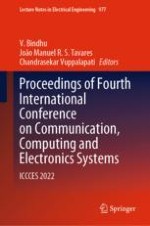This book includes high-quality research papers presented at the Fourth International Conference on Communication, Computing and Electronics Systems (ICCCES 2022), held at the PPG Institute of Technology, Coimbatore, India, on September 15–16, 2022. The book focuses mainly on the research trends in cloud computing, mobile computing, artificial intelligence and advanced electronics systems. The topics covered are automation, VLSI, embedded systems, optical communication, RF communication, microwave engineering, artificial intelligence, deep learning, pattern recognition, communication networks, Internet of things, cyber-physical systems and healthcare informatics.
